Ripley Entertainment Inc.'s Blog, page 212
March 24, 2020
CARTOON 03-24-2020
March 23, 2020
Soap Mummies: Why Some Bodies Turn Into Soap When They’re Buried
Featured in Ripley's Believe It or Not!

Death is a mysterious part of life. The only certainty is that when you die, the elements will take a toll on your body. If you choose to be disposed of through the rite of cremation, your body will dissipate into smoke and ash. Those who wish to be interred in a cemetery will decompose through the aid of insects and bacteria. Left in a dry environment, as the ancient Egyptians were fond of, flesh can harden and mummify. And, on very rare occasions, under just the right conditions, your body may turn into soap!
Slippery Beginnings
A chemical process called “saponification,” or “making into soap,” is at work in these instances. People intentionally use this process to make soap out of vegetable oils and animal fats. Typically, the triglycerides in the fatty materials evolve into soap through the help of a chemical component, such as lye or sodium chloride. But when saponification happens to humans, it’s generally not on purpose—Fight Club notwithstanding. Bodies that end up in water or soil with the right enzymes can have their fat turned into wax. When the rest of the body decays, it leaves just the skeleton covered in thick deposits of tan or grayish-white “soap.”
Such is the case with “soap mummies,” whose bodies have converted fat deposits into a waxy substance. Known as adipocere—colloquially called “grave wax” or “corpse wax”—this material generally forms in environments that are warm, wet, devoid of oxygen, and in the presence of bacterial enzymes, as Caitlin Doughty of “Ask a Mortician” explains. Basically, in its formation, putrefaction is replaced by a permanent firm cast of fatty tissues on internal organs and the face.
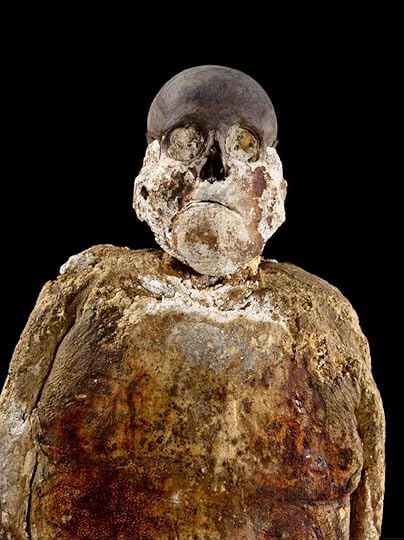
Courtesy of Donald E. Hurlbert, Smithsonian Institution
Historical Remains
While, ostensibly, any body has the potential to become a soap mummy, these oddities are rare. Two of the most famous are the “Soap Lady,” displayed at the Mütter Museum in Philadelphia, and the “Soapman,” displayed at the Smithsonian National Museum of Natural History in Washington, D.C. Both specimens were exhumed from the same Philadelphia graveyard in 1875, as construction on a new train depot required the removal of gravesites. Water had seeped into both of their caskets, bringing alkaline soil with it and preventing the bodies from decaying the way most buried remains do.
While it can be off-putting to see a human body turned into soap, anthropologists can learn a lot from these specimens. Since the clothing is typically encased in wax, the fibers are better-preserved, giving scientists information about when they lived, and their bones are intact within the fatty material. Technology like X-rays and CT scanners can analyze the bones, helping to determine their age at death. The Soap Lady, for instance, has no teeth, but analysis of her bones suggests she was in her 20s when she died.
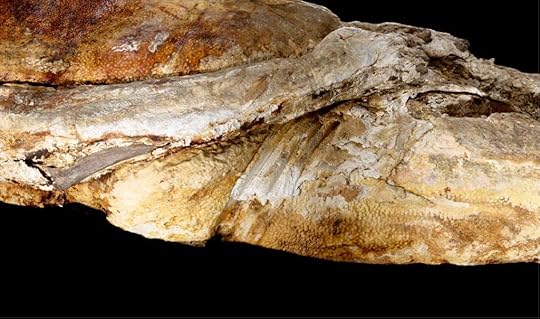
Courtesy of Donald E. Hurlbert, Smithsonian Institution
Different processes of decay can be strange and unpredictable. Soap mummies represent one of the strangest fates for bodies of all. So if you want to leave behind a scientifically beneficial, yet squeaky-clean, corpse, be sure to request saponification before your interment.
By Kristin Hugo, contributor for Ripleys.com
Kristin Hugo is a science journalist with writing in National Geographic, Newsweek, and PBS Newshour. She’s especially experienced in covering animals, bones, and anything weird or gross. When not writing, Kristin is spray painting and cleaning bones in her New York City yard. Find her on Twitter at @KristinHugo , Tumblr at @StrangeBiology , and Instagram at @thestrangebiology .
EXPLORE THE ODD IN PERSON!
Discover hundreds of strange and unusual artifacts and get hands-on with unbelievable interactives when you visit a Ripley’s Odditorium!
Source: Soap Mummies: Why Some Bodies Turn Into Soap When They’re Buried
CARTOON 03-23-2020
March 22, 2020
CARTOON 03-22-2020
March 21, 2020
CARTOON 03-21-2020
March 20, 2020
NASA Fixes Probe On Mars By Whacking It With Shovel
Featured in Ripley's Believe It or Not!

This Week
[March 15-21st, 2020] Rudimentary rocket science, toilet paper tabulations, Europe’s best tree, and the rest of the week’s weird news from Ripley’s Believe It or Not!
Hit It to Fix It
When NASA’s InSight lander arrived on the Martian surface, scientists were ecstatic for the lander’s ground-penetrating probe to dig into the Mars’s soil and learn all sorts of things about the red planet. Unfortunately, the probe—dubbed “the mole”—got stuck. After a year of half-stalled research, the experts at NASA devised a plan to unstick the probe that shows promise: whacking it with the lander’s shovel arm. It seems to be working, as the mole has now been able to dig deeper.

NASA/JPL-Caltech
TV Doctors Fight Coronavirus
As hospitals continue to face shortages of masks and other medical supplies, help has started to come from an unlikely place: tv medical dramas. Shows like Grey’s Anatomy and The Resident have donated masks, gowns, gloves, and other medical supplies they had purchased for use in filming.

TP Usage Calculator
If you’ve been to a big-box store lately you may have been slightly worried to see the paper aisle completely devoid of toilet paper as the run on TP swept the nation. If you’re wondering how much longer your home supply will last you, a London based software development studio has the solution. At howmuchtoiletpaper.com you can get an algorithmic estimate of how much longer you have before needing to stock up. They estimate a single roll is good for about 15 uses.

The Tree of the Year
A lonely tree perched on a crop of rocks in the middle of a river has been deemed Europe’s Tree of the Year. A Scots pine in the Czech Republic, the tree is known as the Guardian of the Flooded Village. Legend claims the devil would sit beneath the tree at night playing the violin, warding off trespassers from the flooded village that once existed where it stands. Estimated to be 350 years old, the tree has stood against centuries of climate change and human impact.
Big Brother In The Dark
A group of European game show contestants was kept in the dark about measures taken to combat the Coronavirus pandemic. The show, called Big Brother, keeps contestants confined to a house and subject to constant video surveillance. Canadian contestants hadn’t had contact with the outside world since February but started to suspect something was amiss when they no longer had a live audience watching them. They’ve since been informed but decided they might as well stay put. The German contestants were told on live tv, and given the option to leave, but they all decided they were already in the best quarantine possible.

EXPLORE THE ODD IN PERSON!
Discover hundreds of strange and unusual artifacts and get hands-on with unbelievable interactives when you visit a Ripley’s Odditorium!
CARTOON 03-20-2020
March 19, 2020
Did 300 Spartans Hold Off a Persian Army of Millions?
Featured in Ripley's Believe It or Not!

Who can forget the tale of the 300 Spartans who held the pass of Thermopylae for three days against Persian hordes from the east? Movies such as 2006’s 300 continue to bring this landmark moment in ancient Greek history to life. They emphasize themes central to the fight, including freedom against oppression and courage in the face of insurmountable odds.
But did 300 Spartans really make a final stand against King Xerxes’s massive army of millions? Here’s what we now know about the Spartan and Greek sacrifice that occurred that day.
The Persian Invasion of Greece
In 480 B.C., King Xerxes I of Persia had an axe to grind with the Greek city-states. His father King Darius invaded what is modern-day Greece in 492 B.C. This invasion involved two campaigns, resulting in a decisive Athenian (Greek) victory during the Battle of Marathon in 490 B.C.
Darius had hoped to kill two birds with one stone during the invasion. First, he wished to punish the Greeks for their support of the cities of Ionia (in modern-day Turkey) during a revolt against Persian rule. Second, he saw an opportunity to expand his empire westward.
After the final defeat of the Persians at Marathon, however, Darius died before he could lay siege to the Greek Peloponnese and mainland again. After Xerxes succeeded him, the son took up his father’s grudge and was determined to conquer the Greeks once and for all.
The Greeks Unite
Although the residents of the various Greek city-states shared some basic cultural similarities, they also fought and vied for power amongst themselves. These differences led to competitions such as the Olympics as well as outright warfare. Among the most often contrasted city-states were those of Athens and Sparta.
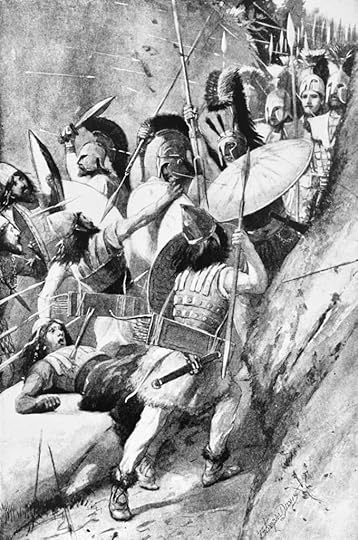
Depiction of the Battle of the Thermopylae, John Steeple Davis (1844–1917)
The Athenians were capable warriors with a distinguished Navy, yet they also fostered a deep appreciation for philosophy, poetry, and art. The Spartans found these pursuits unappealing, embracing a far more single-minded approach to life. The result? One of the most brutal, militaristic cultures in history.
As the Persians advanced on Greece, however, all differences were laid aside in defense of the homeland. As allies, they quickly determined the best place to hold off the advancing Persian army was the land pass of Thermopylae—“The Hot Gates”. Located just 40 miles from the narrow strait between Euboea and the mainland, local geography naturally fortified the spot, making it nearly impenetrable save for a small footpath. This footpath could allow an enemy force to outflank the defenders, but the Greeks wagered that this vulnerability would remain a secret.
The Last Stand at Thermopylae
Because of the size of the force, the Persian advance moved at a leisurely pace. By the time they reached Mount Olympus, months had passed. It was August, an inconvenient time of year for the Spartans to get involved in a fight.
Sparta held both their Carneia and Olympics during this month, and believed forgoing these events would offend the gods. With the advance of a foreign force, offending the gods was the last thing the Spartans wanted to do. A compromise had to be reached.
As a result, the full Spartan army could not advance towards Thermopylae. Instead, their king, Leonidas, took small force of 300 combat-hardened veterans. With this compromise reached, the veterans set out along with 300 Helots, or slaves.
The 300 Spartan hoplites never intended to hold the pass alone. They relied on 700 warriors from Thespiae and 440 from Thebes to fill their ranks. When combined with other Greek forces that met up with them at Thermopylae, Leonidas commanded thousands of troops.
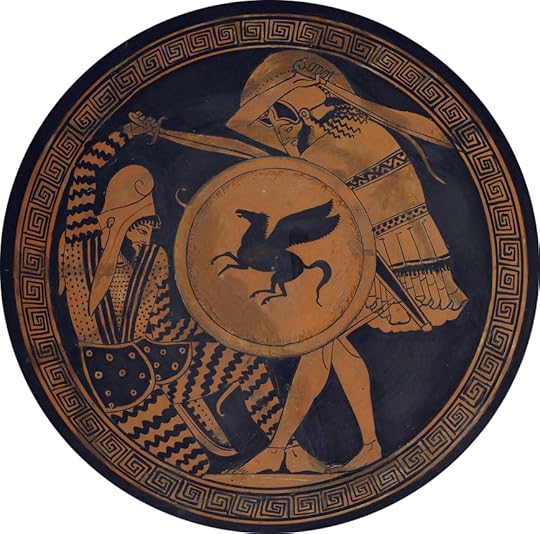
Depiction of a Greek hoplite and a Persian warrior fighting each other.
A Numbers Game
How many soldiers actually fought and died at Thermopylae? The earliest source material about the last stand of the Spartans comes from Herodotus in the 4th century B.C. He claimed that the Persian forces numbered about two million strong, but historians today suggest Xerxes’s forces were only between 100,000 and 300,000.
As for the Greeks? The combined troops likely numbered between 4,000 and 7,000. On the last day of the battle, however, Leonidas dismissed most of the army after learning that the Persians had discovered the “secret” path. According to legend, Ephialtes betrayed his countrymen to the Persians. Forming a rearguard of about 1,500 men, Leonidas and his troops fought bravely to the death, sacrificing their forces in a stall tactic that would allow the bulk of the retreating Greek army to escape. Even at its lowest estimates, the Persians still outnumbered them nearly 100 to one.

Leonidas at Thermopylae by Jacques Louis David
Thermopylae became a rallying cry for Greek forces who later defeated the Persians and sent them eastward once more at the Battles of Salamis and Plataea in 479 B.C.
By Engrid Barnett, contributor for Ripleys.com
EXPLORE THE ODD IN PERSON!
Discover hundreds of strange and unusual artifacts and get hands-on with unbelievable interactives when you visit a Ripley’s Odditorium!
Source: Did 300 Spartans Hold Off a Persian Army of Millions?
CARTOON 03-19-2020
March 18, 2020
These Papyrus Scrolls Hold Unknown Secrets
Featured in Ripley's Believe It or Not!

Believe It or Not!, paper is a fairly recent invention in the scheme of human history. Developed in China, it didn’t make its way to Europe until the 12th century. Before that, parchment and animal-derived vellum were popular for a few hundred years. Over a millennia before this, however, papyrus was the ultimate writing material.
Papyrus dates back to the fourth millennium B.C. Named after the sturdy river reed it is made from, papyrus plants once grew in abundance along the Nile River. Papyrus was something of a wonder plant for ancient civilization. Not only could it be used to make writing surfaces, but it could also be fashioned into rope, sandals, baskets, and even boats!

Papyrus stems
To make papyrus into “paper” the pith of the plant was cut into sheets. Sticky when first cut, the sheets would be hammered together with their own juices acting as a sort of glue. Once formed, the scrolls were left to dry. The result was a thick, woody material that was pliable, yet durable. This technique of using vegetation as a writing medium has been used across cultures, but the availability of papyrus sparked unprecedented production of written documents across Europe. Paired with a society developing a sturdy written-language based religious structure and government bureaucracy, papyrus is now seen as a hallmark of Egyptian society on par with mummies and pyramids.

The papyrus scrolls in the Ripley collection are from the Ptolemaic Period, making them about 2,300 years old. After the death of Alexander the Great, this period would see the installation of Greek pharaohs that would rule until Cleopatra lost the kingdom to Roman conquest.
If you look closely, you’ll notice our scrolls are not covered in hieroglyphics, as you might expect. Instead, the script is Demotic—a written language that appears on the Rosetta Stone. Demotic. This script was mostly reserved for writing documents and was simpler than hieroglyphics.
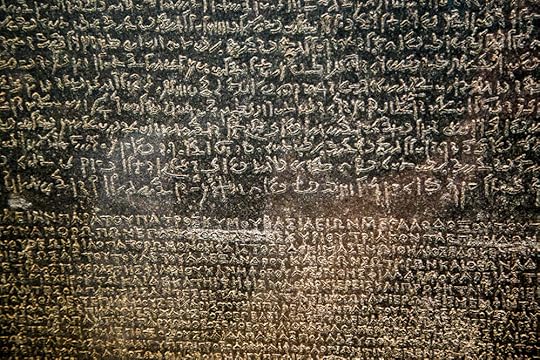
Credit: Viiviien/Shutterstock
Though it’s become impossible to decipher our scrolls due to their age and fragility, papyrus was used for a multitude of documents. Everything from religious texts to ledgers would be recorded on papyrus. Despite never being intended to act as millennia-spanning records, papyrus has preserved the only known copies of the Book of the Dead and early Egyptian medical techniques into the modern age.
Ripley Entertainment Inc.'s Blog
- Ripley Entertainment Inc.'s profile
- 52 followers









